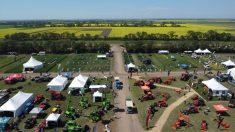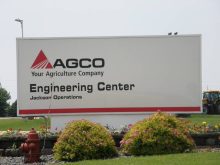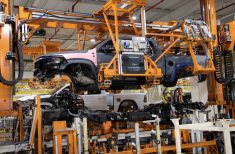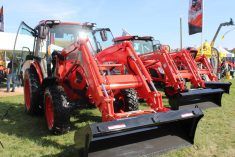The name Cockshutt is a familiar one on the Prairies. In the late 1800s, this company brand could be found on horse-drawn carts, plows and discers. By the mid-1900s, the name was on combines, warplanes, truck bodies and the groundbreaking Cockshutt 30 tractor. William H. Cockshutt (Bill) witnessed much of it.
As a boy living in Smiths Falls, Ontario in the late 1930s, Bill watched as the company evolved from a small foundry that made plows to a multimillion-dollar entity that made bomber fuselages during the Second World War, manufactured Canada’s first widely used tractor and was the originator of the Live Power Take Off (LPTO) system.
Read Also

Gentle treatments for pain in the neck
Heading toward year-end, people unknowingly tense up against the cold and busyness, causing neck pain that can often be treated with appropriate support and gentle mobility, athletic therapist Kathlyn Hossack says.
“When I was 11 or 12, the factory was in our backyard,” says Bill, who is now retired to Wolseley, Sask. with his wife Helen.
In 1877 James Cockshutt, Bill’s great-uncle, founded a small manufacturing company in Brantford, Ontario called The Brantford Plow Works. He made inroads in Western Canada by creating the first plows designed specifically for breaking prairie sod.
The successors to The Brantford Plow Works were the Cockshutt Plow Company (1882) and the Cockshutt Farm Equipment Co. Ltd. (1951).
By the 1930s and ’40s, the Cockshutt Plow Company was making everything from disc plows, seeders and swathers to automobile bodies and aircraft parts. Bill, now 85, remembers walking into the foundry to this day.
“The iron would be bright red, hot and steaming. It was almost fierce or frightening when they poured the hot metal into moulds of sand, but when it cooled they took the sand off and you ended up with a part of some kind like a transmission case.”
In 1947 Cockshutt became the first company in Canada to design and build a tractor which achieved marketing success — the Cockshutt 30. North American tractor builders rushed to copy the revolutionary industry-changing LPTO feature. The tractor, then priced around US$1,500, was marketed aggressively under the Co-op name in northeastern U.S.
Bill writes in his book: ‘By the close of 1948 this full-fledged farm equipment company and fast-growing truck manufacturer had far more to offer than plows and tillage tools. It had excellent combines and tractors, and a revitalized marketing team.’ The company employed 4,200, and the Brantford factory covered 50 acres with a million square feet of manufacturing floor space.
At this time, Bill was a 20-year-old engineering student at Queen’s University in Kingston, Ontario, and the company was being operated by his uncle, C. Gordon Cockshutt. “My uncle said, ‘You’re not doing very well at university, so why don’t you get out of there and go to work, in fact, you can start now,” recalls Bill, and his marketing career began.
“It was a magical time because our products were so good that they did a superior job. It was nice to work with a farmer on a combine in the field and show him how to get a cleaner sample in the tank.”
Bill eventually became branch manager based in Kansas City, and in 1958 he married a girl from Wolseley, Saskatchewan. In 1962 the company was flourishing, and then disaster struck swiftly and unexpectedly.
English Transcontinental, a British mercantile bank, was buying up considerable amounts of Cockshutt stock on the open market. “My uncle and board of directors thought that it was a wonderful idea — here’s an English bank that wants to put money into Canada. And then we found out that they were not who they said they were.”
English Transcontinental turned out to be front men for an American financial group whose business was to buy and dismantle companies. “It happened so suddenly that nobody knew what was happening until they arrived on the scene and said, ‘We own one-third of your company.’”
For a family that had worked for generations to build its company into a profitable and well-respected organization, the decimation of Cockshutt Farm Equipment Co. Ltd. was devastating. Eight years after the hostile takeover, the Cockshutt company name was changed to White Farm Equipment and by the 1970s, White had gone bankrupt and the massive manufacturing centre in Brantford disappeared.
While Bill too was devastated, the writing of his book helped to restore his sense of pride in the accomplishments of one of Canada’s most innovative agricultural equipment companies.
“I’m proud of the fact that my family and myself were involved in making good products that did a lot for western farmers, for Brantford, for Canada and for agriculture as a whole.”
Bill was able to retain financial records and company documents that showed that “they conserved cash and didn’t go to the banks for money so that they could develop new products without having to pay interest.”
About Cockshutt contains not only the written history, but the visual story in the form of posters, drawings, letters, advertisements and photos.
“I’m hopeful that I’m making a contribution to history for future generations so they understand what Cockshutt did and the part it played in the agricultural and business development of Canada.”
For more information or to order a copy, email [email protected]. †















